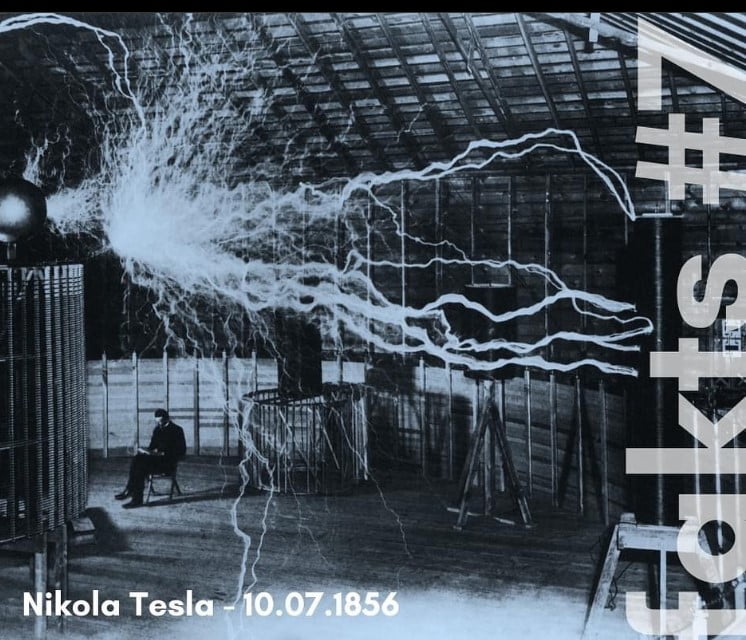The world is brimming with an abundance of peculiar and awe-inspiring information about everything we encounter, perceive, and experience on a daily basis. Electricity, specifically, is an essential aspect we depend on constantly, often without delving too deeply into its intricacies. Nevertheless, it may surprise you to learn that there exists an array of fascinating and entertaining facts about electricity, which transform this commonplace requirement into a captivating phenomenon.
Top 10 Facts About Electricity

Image Source: Instagram @electricityfacts
Here are some top facts about electricity:
- The velocity at which electricity travels is equivalent to the speed of light, soaring at 186,000 miles per second.
- Centuries ago, the ancient Egyptians possessed knowledge about the formidable power of lightning and electric fish shocks. “They” referred to these fish as the “Thunderers of the Nile.” Diverse sources such as water, wind, sunlight, and even animal waste have the potential to generate electricity.
- During a lightning strike, the electric current flows from the cloud to the ground. However, the visible part of the lightning is actually the charge returning from the ground back into the cloud.
- In electroconvulsive therapy (ECT), electricity is used to induce seizures as a treatment for psychiatric disorders.
- In the 1880s, a notable “war of currents” took place between Nikola Tesla and Thomas Edison. Tesla contributed to the invention of alternating current (AC), while Edison contributed to the invention of direct current (DC). Both inventors vied for the popularization of their respective currents. Ultimately, AC emerged victorious due to its safety and ability to transmit over longer distances.
- Iceland holds the distinction of being the country with the highest annual electricity consumption. Their usage surpasses that of the United States by approximately 23%.
- Static electricity occurs when electrons leap from one object to another.
- The world’s largest light bulb is situated in Edison, New Jersey. Standing 14 feet tall and weighing eight tons, it adorns the summit of the Thomas Edison Memorial Tower.
- On average, a household in the United States consumes 11,000 kWh of electricity per year.
Fun Facts About Electricity
- Pearl Station, constructed in 1882 in Manhattan, was the inaugural central power plant in the United States. It served a total of 85 customers.
- Electricity traverses through closed loops called “circuits.” Electrons require a complete pathway in order to move. If a circuit is open, electrons cannot flow.
- Electricity exists within our bodies, as our nerve cells utilize it to transmit signals to our muscles.
- In 1879, Mosley Street in Newcastle upon Tyne witnessed a historic milestone as it became the pioneering site for electric light bulbs, illuminating the first street in the world in such a manner. Transitioning to another remarkable achievement, in 1882, Thomas Edison, credited as the builder of the inaugural power plant, accomplished a significant milestone with the launch of his Pearl Street Power Station in New York. This station successfully supplied electricity to 85 buildings.
- The year 1891 saw the advent of the first triumphant electric car, crafted by American inventor William Morrison.
- In 1878, Australia witnessed the first utilization of electricity as it illuminated the General Post Office in Sydney.
- Electric eels, electric rays, and certain species of fish can produce electric fields to communicate, navigate, and locate prey.
- The world’s largest battery, known as the Hornsdale Power Reserve, is located in South Australia. It has a capacity of 150 megawatts and can store and distribute electricity to help stabilize the power grid.
- Lightning is a natural form of electricity that can reach temperatures hotter than the surface of the sun.
Electricity Interesting Facts

Image Source: Instagram @pawbolbaltic
- The average voltage of an electrical outlet in most homes is around 120 volts in the United States and Canada, while it is around 230 volts in many other parts of the world.
- The human body conducts electricity. Sensitive instruments can measure the small electric current generated by the average human.
- When utilizing a traditional lightbulb, the bulb effectively converts a mere 10% of the consumed electricity into light, while it dissipates a staggering 90% as heat. This inefficiency serves as one of the numerous motivations behind the growing trend of homeowners transitioning to LED alternatives.
- Signals play a vital role in every bodily function and movement, including the beating of your heart. Moreover, each time your heart receives the signal to contract, it pumps blood throughout your body. Additionally, this electrical signal travels through your body at a frequency ranging from 40 to over 100 times per minute. Remarkably, this essential function is driven by the inherent electricity within your own body.
- Given that our bodies consist of approximately 60% water, we possess remarkable conductivity for electricity. When exposed to high levels of electrical current, it instinctively seeks the path of least resistance. If we happen to make contact with such current, it readily flows through the water within our bodies, leading to an electric shock. Consequently, our muscles involuntarily contract, and our airways constrict, triggering an immediate and perilous response.
- A recent study conducted by The Association for Decentralised Energy reveals an alarming statistic: a significant 54% of energy is squandered annually in the UK, amounting to an astonishing £9.5 billion. Further analysis reveals that this wastage translates to a substantial cost per household, potentially reaching £354. This figure exceeds more than half of the average electricity bill for UK residents.
READ ALSO: Technical Facts | Technological Marvels Unveiled
Other Facts
- A static electricity spark can reach a staggering voltage of 3,000 volts.
- The average Taser discharges an impressive 50,000 volts.
- A lightning bolt can surge to an astonishing three million (3,000,000) volts, lasting a mere fraction of a second.
- Based on the Global Energy Statistical Yearbook, worldwide electricity production in 2015 amounted to approximately 25,000 terawatt hours, with each terawatt equaling one trillion watts.
- The concept of electric power transmission over long distances was pioneered by George Westinghouse and Nikola Tesla, leading to the creation of the first hydroelectric power plants.
- The standard unit for measuring electrical power is the watt, named after James Watt, the Scottish engineer who played a crucial role in the development of the steam engine.
- The French physicist André-Marie Ampère, who made significant contributions to the understanding of electromagnetism, lends his name to the unit of electrical current, the ampere.
- Benjamin Franklin famously conducted the kite experiment in 1752, where he flew a kite during a thunderstorm to prove that lightning was a form of electricity.
- In 1882, engineers built the world’s first hydroelectric power station at Niagara Falls, which supplied electricity to nearby cities.
- The average voltage of an electrical outlet in most homes is around 120 volts in the United States and Canada, while it is around 230 volts in many other parts of the world.
- The electric eel possesses the remarkable ability to generate shocks of up to 600 volts.










